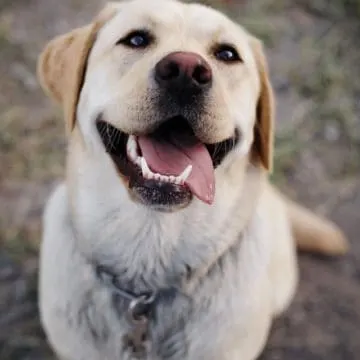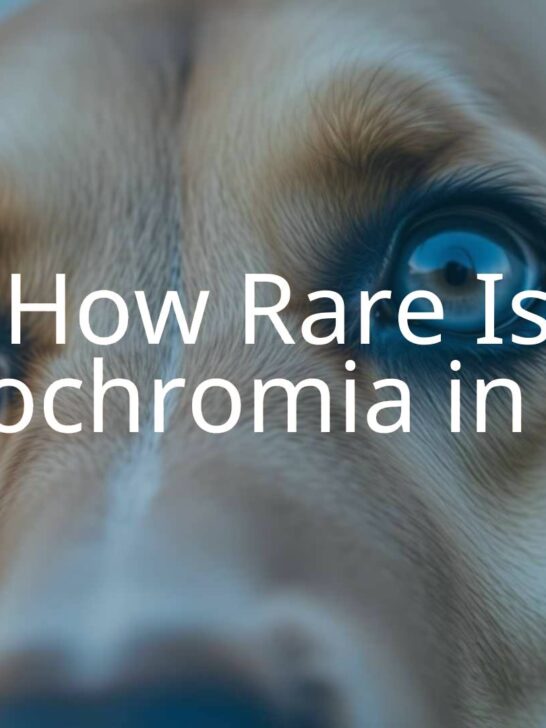The Reliable Labrador Retriever Vs German Shepherd: Which Loyal Dog Is Best For You?
The German Shepherd and Labrador Retriever, or Lab for short, are both among the most popular dog breeds in the United States.
The Lab has impressively held the top spot since 1991!
These dogs are classified as part of the working class of canines, even though their working backgrounds are quite different.
German Shepherds were originally bred to be herding dogs, and are known for their work in the police and military.
The GSD’s sweet nature and intelligence also allows it to be an excellent service dog for those with disabilities.
Labrador Retrievers were primarily raised and trained to be hunting dogs, but the breed is also a popular choice for those needing service dogs.
The German shepherd vs Lab debate is a tough one to settle.
Both breeds are top-notch working dogs and family dogs, and their loyalty to their humans is unmatched.
To help you decide which of these two dogs is best for you, we will compare their:
- Breed histories
- Temperaments
- Training requirements
- Suitability for families
- & more!

Labrador Retriever vs German Shepherd: Quick Facts
| Name | Appearance | Breed History | Personality & Temperament | Coat Care | Size | Exercise & Training | Health & Life Expectancy | Kid Friendly? |
|---|---|---|---|---|---|---|---|---|
| German Shepherd |  | German origins. All-around working dog, originally bred to herd sheep. 2nd most popular dog in America. | Superior intelligence. High energy levels. Needs to stay active & mentally stimulated. High prey drive/chase instincts. Forever loyal to their owners. | Sheds heavily year-round and seasonally. Medium-length double layer coat. Needs regular brushing and the occasional bath. | 50-90 pounds, 22-26 inches tall. Females will be 10-15 pounds lighter and two inches shorter. | Needs 1-2 hours daily exercise. Start puppy socialization & training ASAP. | Lifespan: 9-13 years. Common genetic health issues: Dysplasia (hip, elbow), Autoimmune thyroiditis, Degenerative myelopathy. | Yes - IF properly trained, these can be great family dogs. |
| Labrador Retriever (Lab) |  | Originated in Newfoundland & were originally bred to help fishermen. Most popular dog breed in America. Great working dog, family dog, and therapy dog. | Outgoing, kind, intelligent, trainable, loyal, and very social. Can be a little 'rowdy', especially as puppies. Can also be prone to separation anxiety. | Double coats that will mainly shed twice per year. Ideally needs to be brushed once per week at minimum, but preferably every day to help with shedding. | WEIGHT: Female: 55–71 lbs, Male: 64–79 lbs. HEIGHT: Female: 22–24 inches, Male: 22–24 inches | Needs a lot of exercise to avoid behavior issues at home. Loves to play games, especially games of fetch. Trainable dogs using positive reinforcement methods. | Lifespan: 10-12 years. Common genetic predispositions include: bloat, liver problems, bleeding disorders, Hemolytic Anemia & Thrombocytopenia, bone & joint problems. | YES!!! This is the prototypical American family dog. Good with kids and other pets. |
German Shepherds
The German Shepherd Dog is highly trainable, and actually improves when he is allowed to work.
These dogs, therefore, need owners who are committed to providing daily exercise and lots of mental stimulation.
All in all, the GSD is a great family dog; however, he should be adopted by a family or an owner with ample time to provide the required training, exercise, and love to the dog.
German Shepherd Dogs are highly intelligent, and boredom, as well as pent-up energy, can cause him to become destructive.
They are not typically aggressive dogs, even though this is often the type of misinformation spread about the breed.
Rather, with ample playtime and attention from loving family members, the German Shepherd Dog will be a great, protective addition to your family.
Labrador Retrievers
According to AKC, The Labrador Retriever is also one of the most popular dog breeds in America.
A member of the working class of dog breeds, the Labrador Retriever is most typically used for duck hunting or other forms of bird hunting.
The Labrador Retriever was primarily thought of as a companion for fishermen, and not only “retrieved” waterfowl, but also assisted fishermen in hauling heavy fishing nets, retrieving ropes, and even bringing in fish.
The Labs of today are still working dogs; in fact, they thrive on being able to assist their owners in a number of tasks.
They are also quite versatile in that they are often used as service and companion dogs.
The German Shepherd Dog
Loyal and brave, the German Shepherd Dog is perhaps one of the most misunderstood dog breeds.
The German Shepherd was developed to be a herding dog in the cold Northern European climate.
They were a coveted member of the German forces in World War II, and many American soldiers brought a GSD (German Shepherd Dog) home from their tour of duty in Europe.
They had seen the GSD in action as a working dog, and, although the GSD is a fierce military dog, the loyalty of the breed is virtually unmatched.
When soldiers brought the GSD to American shores, they have bred for companionship purposes as well as the ability to utilize their working potential.
Soldiers returning home knew that the GSD was superb at search and rescue missions as well as protecting the home, and the GSD was a proven herding dog.
As the dog breed grew popular in America, many police departments sought to employ the breed for the aforementioned rescue missions as well as drug detection and other police work.
So, we know why the German Shepherd became a popular dog, but it might be important to understand how the origins of the breed make it especially prepared for work assignments.

The History of the German Shepherd Breed
The ancestors of the German Shepherd Dog were really a mix and match of varying herding dogs.
In fact, before the distinct breed was developed, farmers would travel all over Northern Europe to find a satisfactory male with which to breed their female sheep herding dogs.
However, in 1898, a retired military officer, Captain Max von Stephanitz determined that he would create a distinctive breed of herding dog that could be identified as the prime sheep herding dog.
Stephanitz did this by learning all about the breeding standards the British used to perfect dog breeds in that country.
He also began attending dog shows featuring sheep herding and working dogs, and he noted the German-type of herding dogs.
Although Stephanitz observed many dogs that were capable of sheep herding dogs, he did not find one dog that was both smart and athletic.
It was then he determined the breed he was going to develop would be capable, intelligent, and physically fit.
The Wolfish-looking Dog Behind The German Shepherd
Hektor was a “wolfish-looking” dog, and he was the perfect, powerful pup to begin developing the German Shepherd Dog.
Stephanitz looked high and low for the perfect dog to sire this unique sheep herding dog, and he finally found the proper pooch in Hektor Linksrhein.
After Stephanitz began developing what would become the GSD, he realized that Germany and all of Europe was becoming more industrialized.
Not to be outdone, Stephanitz determined he would use his military experience to promote the new dog as a police or military dog.
It was due to Stephanitz’s promotion of the GSD as a military dog that prompted American soldiers to bring the dogs Stateside.
One dog that would travel to its forever home in the United States due to an Allied soldier’s interest would become a very famous Hollywood pup.
According to Canidae, A puppy rescued from a bombed residence would be adopted by a soldier and trained to become the “actor” Rin Tin Tin.
Issues with the German Shepherd
Over the years, the German Shepherd became prone to temperament issues and tooth decay.
However, top breeders began to emphasize certain standards that not only preserved the physical prowess of the German Shepherd originally envisioned by Captain Stephanitz but also to weed out the negative personality traits.
Once American breeders began to import a few European GSDs to improve the American stock, a push for the breed to do police and military work in the United States became the chief breed for that line of employment.

The German Shepherd Personality
When it comes to comparing the GSD to other breeds, one chief area of difference is the aloofness of the German Shepherd.
This is not to be misconstrued as a negative trait, however. The German Shepherd’s reserved personality makes him a great protector.
The GSD typically observes all around him; however, with family, It is friendly and happy-go-lucky. German Shepherd are great watchdogs, they are loyal and protective.
However, they have a few non-negotiable needs. First, they must have ample exercise.
As working dogs, GSDs need to release pent-up energy as often as possible.
Next, they are not good dogs for those who won’t spend a lot of time with them. Dogs left alone a lot may develop bad habits due to separation anxiety.
The German Shepherd dog is not one that you wish to see develop any of said habits!
The Labrador Retriever (Lab)
The Labrador Retriever is native to the chilly North Atlantic area of Canada. In fact, the original Labrador Retrievers were developed in Newfoundland.
They were originally known as “St. John’s Dogs,” a nod to the capital city of Newfoundland.
Labrador Retrievers, or their ancestors, were known as the fisherman’s helper around the 1700s.
Experts believe that the St. John’s Dog was bred with the Newfoundland Dog breed and other water dog breeds in the North Atlantic Canadian area.
The result is the Labrador Retriever that we know today.
According to DogTime, The Labrador Retriever was immensely popular with the natives of Newfoundland.
But the dog garnered the attention of the English sportsmen who visited the area in order to take advantage of the ample hunting and fishing opportunities in the area.

Labs and English Nobility
Many of the English nobility who visited Newfoundland to hunt or fish purchased Labrador Retrievers and took them home with them to England.
In fact, it was an English earl who is responsible for giving the Labrador Retriever his modern moniker.
The third Earl of Malmesbury is noted as the first to refer to the breed like the Labrador Retriever. The name stuck, and the rest is history.
At one time, the breed almost died out!
In Newfoundland, government officials began taxing those who owned a female puppy, and the government also mandated that all families be permitted to own no more than one dog.
However, the Earl of Malmesbury once again came through to keep the breed from dying out.
The Earl, along with other fanciers of English origin, made sure to keep breeding their dogs for the betterment of the Labrador Retriever.
Not only did the English version of the Labrador Retriever survive, but it thrived.
After World War II, the Labrador Retriever breed became increasingly popular in the United States, and by 1991, the Lab was the top popular breed in America.
The Lab as a Service or a Working Dog
Just as the German Shepherd is a working dog at heart, the Labrador is a working dog as well. They assist the handicapped as seeing-eye dogs.
They are also great therapy dogs for those suffering from Post Traumatic Stress Disorder or other mental disorders.
Furthermore, just like the German Shepherd, the Labrador Retriever works is drug detection and in sniffing out explosives.
The Labrador Retriever is also astute at providing search and rescue assistance.
The Labrador Retriever as a Hunting and Fishing Dog
Originally, the Labrador Retriever was meant to be a hunting and fishing dog. As previously stated, the Lab was a great helper to local fishermen.
When hunters took down waterfowl, the Lab keenly retrieved the prey for their human hunting partners.
Today, the Labrador Retriever is still used as a hunting partner.
They retrieve ducks and other waterfowl. Other uses for the dog include being companion animals, which they are most popular for.
Labrador Retriever vs German Shepherd: The Comparison
The German Shepherd Dog and the Labrador Retriever actually have more in common than one might think.
These two breeds are susceptible to health conditions that plague many large breed dogs, such as hip dysplasia.
Both the German Shepherd Dog and the Labrador Retriever are extremely intelligent, and they welcome training that will allow them to live out their need to work.
Speaking of work, the GSD and the Lab love to work; in fact, they thrive on being able to work.
Finally, both breeds tend to bond with their families.
Perhaps one of the greatest areas of difference in the GSD and the Labrador Retriever has to do with their temperaments.
Labrador Retriever is known for being easy-going, family-friendly, and generally happy-go-lucky dogs.
While the German Shepherd often has a more detrimental reputation, although this reputation is undeserved.
The German Shepherd is, well, a shepherd. This means that the dog is prone to guarding individuals, especially members of its family.
Which is most loyal?
If a child or small adult is trying to walk somewhere the German Shepherd feels is unsafe, the GSD will put itself between the family member and the perceived danger.
While this guarding behavior can and should be seen as a positive, it can be annoying and viewed as misplaced aggression.
This is why the German Shepherd is not a dog for novices.
No matter how good their intentions might be, it is never a good idea for an owner with no experience to take on a GSD.)

Deciding Between The Lab and German Shepherd: Tough choice!
Labrador Retrievers may jump up on their owners, but they never do so aggressively. They also are more accepting of strangers than the GSD.
Unfortunately, some families will opt for a Labrador Retriever due to the fact that the Lab tends to be better with children than the GSD.
This doesn’t mean that the German Shepherd will or has a tendency to hurt children. Not at all! Rather, only experienced adults should take on a young German Shepherd.
The German Shepherd tends to do better in an all-adult family that is experienced with dogs.
However, if the GSD is a part of a family that is willing to provide him with the proper amount of exercise, he will be fine to join a younger family.




















